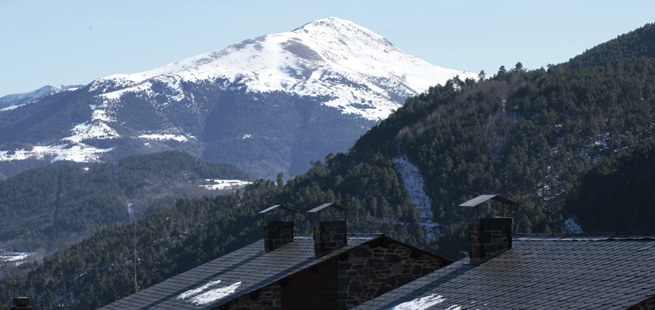| Church of St Cristòfol de Toses |
Toses
This splendid eleventh-century Romanesque church consists of a single nave with an apse and two lateral chapels. The most characteristic elements of this church are the metalwork on the main door, the bell-tower and the medieval wall paintings in the nave. The main door still conserves its original ornamental ironwork made from iron from the local mines. The Romanesque bell-tower has a curious two-sided roof. Inside, there are a number of wall paintings dating from the end of the twelfth century, which are exceptional for the depiction of Christ Pantocrator, the only such painting by the so-called ‘Pyrenean School’ known in Catalonia, and the murals that extend beyond the ceiling of the apse. |
|
